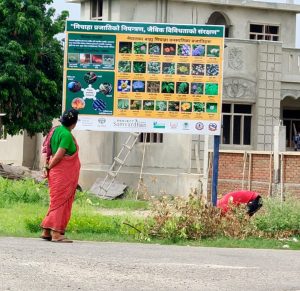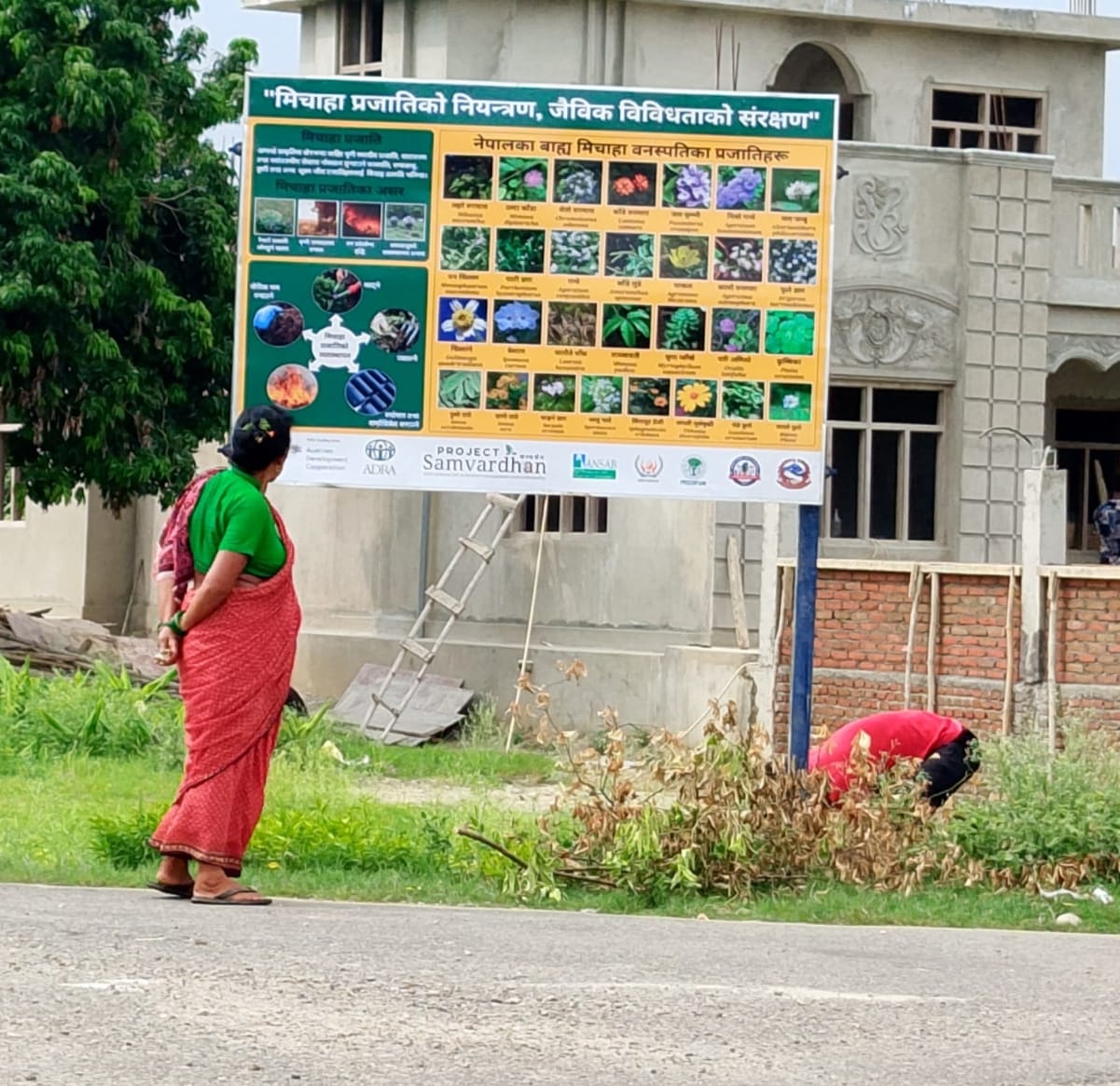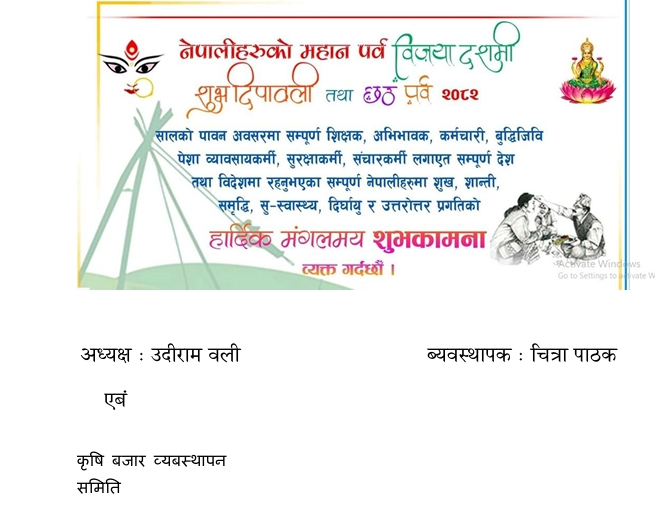Kohalpur : With the aim of contributing to the effective implementation of the Government of Nepal’s National Strategy and Action Plan for the Management of Invasive Alien Species 2081 (2024), the Samvardhan Project has installed public awareness hoarding boards in four municipalities of Banke and Bardiya districts.
It may sound surprising, but small pieces of information written on hoarding boards can play a significant role in conserving biodiversity and maintaining environmental balance. According to Krishna Rana, Chairperson of Siddhibinayak Community Forest Users Group, hoarding boards related to invasive species placed at key public areas in Banke and Bardiya are now becoming the main source of information for ordinary citizens.
The boards have been installed in collaboration with local governments with the core objective of linking invasive species control to biodiversity conservation. “These boards provide citizens with easy access to information about what invasive species are, and what impacts they have. The initiative of the Samvardhan Project can serve as a milestone for biodiversity conservation,” said Ramkrishna Bhandari of Dhakeri Botanical Garden, Banke. He added, “Invasive species displace native species and have huge impacts on agriculture systems and even human life, so awareness is vital.”

According to environmental journalist Sanat Sapkota, the awareness hoarding boards placed in parks, community forest areas, and central municipal squares of Banke and Bardiya will help spread positive messages about invasive species control. Principal and eco-teacher of Bal Shiksha Secondary School, Tarka Bahadur Khatri, said that thousands of citizens will now have easy access to information about the effects of invasive alien species through these hoarding boards placed in public places, parks, and key squares.
In recent years, invasive alien species have spread rapidly in Nepal. These species directly affect not only biodiversity but also agriculture, environment, and human health. Senior forest officer and information officer at the Ministry of Forests and Environment, Lumbini Province, Sushil Subedi, stated, “As invasive species spread in forest areas, they have also increased the risk of forest fires. Especially Banmara (Chromolaena odorata) has reached a point where it is displacing other vegetation.” He further added that invasive species have also affected grazing areas, and therefore, all stakeholders need to pay attention. Aquatic invasive species are affecting the natural systems of ponds, lakes, and rivers, while terrestrial invasives are reducing agricultural productivity.
Jayen Joshi of the Samvardhan Project explained that hoarding boards were installed with the objective of raising awareness at the community level, as invasive species control requires collective action and community awareness. The Government of Nepal has identified invasive alien species management as a national priority through the approved strategy and action plan. However, experts note that successful implementation requires not only government efforts but also strong participation from local governments and communities. In this regard, the Samvardhan Project has taken awareness campaigns as its first step.
The hoarding boards provide awareness messages about invasive alien species in simple language, with the use of attractive pictures and colors to make them understandable for children, students, farmers, women, and the general community. According to project officer Prem Lal Chaudhary, these boards aim to ensure that all groups of society can easily understand the message.
According to project representatives, raising awareness is the first step in enabling local residents to identify invasive alien species and actively participate in their control and management. In the coming days, the project plans to collaborate with local governments to organize community-level discussions, school-based awareness activities, and distribute educational materials. Journalist Bishnu Belbase noted that this would make the efforts even more effective.
At the community level, the initiative has already received positive responses. Local farmers said that in the past they did not have enough information about the damage caused by invasive species, which worsened the problem. However, they expect that hoarding boards and awareness activities will now help increase awareness in villages. Lilaram Sharma, Chairperson of Masurikhet Buffer Zone Community Forest Users Group, said, “This effort will finally bring knowledge to the grassroots.”
Experts emphasize that invasive species management is a long-term task. Although immediate control is difficult, it can be managed gradually through scientific methods combined with community awareness and participation. The hoarding board initiative of the Samvardhan Project is seen as the foundation of such efforts.
The Samvardhan Project has outlined a long-term plan to support the government’s policy and action plan, provide technical assistance to local governments, and mobilize communities as active participants.
Thus, the awareness hoarding boards installed in four municipalities are expected not only to spread public awareness about invasive alien species but also to make a concrete contribution to the effective implementation of the strategy. Additionally, the boards also carry important messages about forest fire prevention.
The Samvardhan Project is active in biodiversity conservation, human–wildlife conflict mitigation, and tourism promotion at the community level in Madhuwan and Thakurbaba municipalities of Bardiya, as well as Kohalpur Municipality and Rapti Sonari Rural Municipality of Banke. The project is implemented under the leadership of ADRA Nepal with financial support from the European Union and Austrian Development Cooperation, in collaboration with ANSAB Nepal, the Federation of Community Forestry Users Nepal (FECOFUN), and the Bheri Environmental Excellence Group (B-GROUP) Banke.














